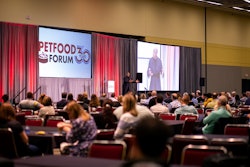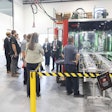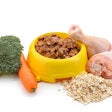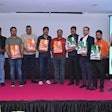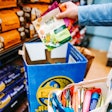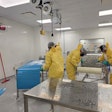GEA is taking on the current market challenge and developing ever more resource-conserving and energy-efficient products and processes for numerous industries. With new circular processes, the company is also improving its own sustainability and helping customers achieve their sustainability goals. GEA is a typical machinery and plant manufacturer whose indirect emissions contribute more than 90 percent to the company's total emissions. This shows that the emissions from the operation phase of the plants at the customer's site must be noticeably reduced. GEA is focusing on a new circular economy that targets both material use and plant operation at the customer's site. To effectively implement a circular economy, a shift in thinking is needed on two levels. Therefore, GEA is both transforming the processes at the material level of its portfolio and at the same time pursuing an approach to always offer its customers the most sustainable production through the machines and equipment supplied. Circular economy for the material level GEA's solution for the material level is based on the introduction of the "Circular Economy" process. This process supports the strategic objective of implementing a circular economy for all machine service parts and packaging materials by 2026. Thus, GEA has a leading role in the mechanical and plant engineering sector. At the heart of the process is the application of an R strategy that operationalizes the five R's–Reduce, Reuse, Repair, Remanufacture and Recycle. For this purpose, a definitional framework was developed for the five Rs to be applied to both the transformation of existing service parts and the design of new parts, since the foundations of circularity must already be laid at the development stage. Circular economy for machinery and equipment In addition to applying a circular strategy based on the five Rs to spare parts and packaging materials, GEA is focusing on the circular economy as a future model for operating machinery and equipment in a circular, and thus more sustainable, manner at every stage of its lifecycle. This model focuses on maximizing the lifecycle and sustainable optimization of productivity, with particular focus on "Design to Sustainability" (D2S). For the development departments, D2S means designing machines and systems in such a way that retrofits and maintenance are possible with maximum lifetime and minimized resource consumption. This design principle also ensures that innovations and the associated technological progress are also made possible for existing products. Digitization as an enabler Digitization will pave the way for the new circular business models. The future revenue models with the necessary processes, methods and tools for circularity can be implemented with digital business models. The products and services offered in digitized form, such as a digital twin or the application of Product Lifecycle Management (PLM), make it possible to accompany a real machine in all lifecycle phases in terms of data provision, simulation, real-time analysis, optimization and operational control. This shows the potential of new customer-oriented services, which can also be geared towards optimized plant operation in terms of ecology and economy. Currently, GEA is rolling out a circular economy with the five Rs for the material level across all business units; this process will be completed in 2025. GEA will consistently take the next step and implement the circular economy principles for machinery and equipment in order to substantially and sustainably reduce Scope 3 indirect emissions.
\
|
GEA developing energy-efficient products
GEA developing energy-efficient products.
May 8, 2023

